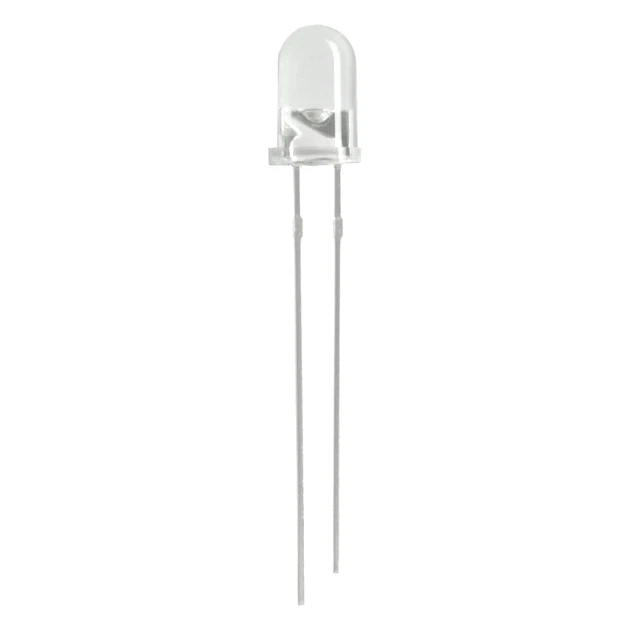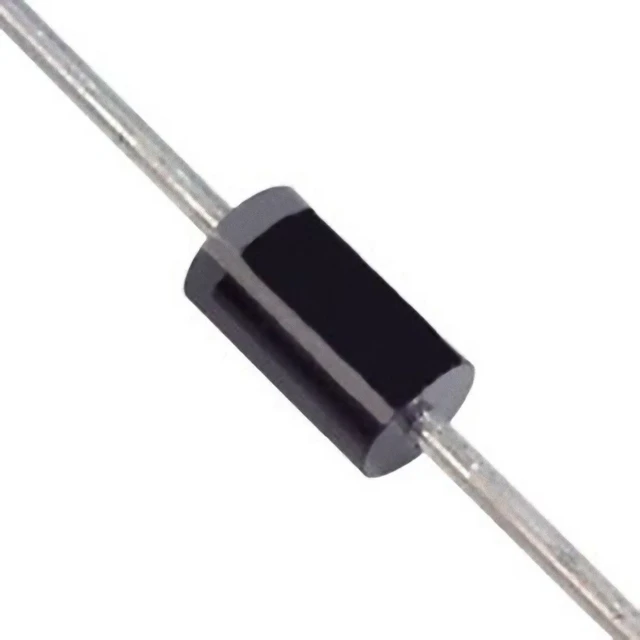Introduction
A diode is an essential component in electronic circuits. It is a semiconductor device that allows current to flow in one direction while blocking it in the opposite direction. This simple yet critical function makes diodes fundamental to the operation of many electronic devices. In this article, we will explore the basics of diodes, their types, working principles, applications, advantages, and much more.
 What is a Diode?
What is a Diode?
Definition
A diode is a two-terminal electronic component. It features a p-n junction that creates a barrier for electrical current. When a voltage is applied across the diode, it allows current to flow in one direction, known as the forward direction. However, if the voltage is applied in the reverse direction, the diode blocks the current.
Structure of a Diode
The basic structure of a diode consists of two layers of semiconductor material:
- P-type Material: This type of semiconductor has an abundance of holes (positive charge carriers).
- N-type Material: This type contains more electrons (negative charge carriers).
These two layers form a junction, known as a p-n junction. The interaction between the p-type and n-type materials sets up an electric field, which is the key to the diode’s operation.
 How Does a Diode Work?
How Does a Diode Work?
Forward Bias
When a positive voltage is applied to the p-side and a negative voltage to the n-side, the diode is said to be in forward bias. This condition allows electrons from the n-side to recombine with holes in the p-side, resulting in a large flow of electric current. The forward voltage drop across a silicon diode is typically about 0.7 volts.
Reverse Bias
In contrast, when the voltage is applied in the opposite direction, the diode enters reverse bias. Here, the electric field at the p-n junction widens. This action prevents current from flowing, as electrons are pulled further away from the junction. In this state, only a minimal leakage current flows through the diode, often measured in microamperes.
 Breakdown Voltage
Breakdown Voltage
If the reverse voltage is increased beyond a certain limit, known as the breakdown voltage, the diode will begin to conduct in the reverse direction. This event can lead to permanent damage in regular diodes. However, certain types of diodes, like Zener diodes, are designed to operate in this region safely.
Types of Diodes
1. Standard Diodes
Standard diodes are the most common type of diode, mainly used for rectification. They convert alternating current (AC) to direct current (DC), making them essential for power supplies.
2. Zener Diodes
Zener diodes operate in reverse bias and allow current to flow when a specific reverse voltage is reached. T
3. Schottky Diodes
Schottky diodes have a low forward voltage drop and high-speed switching capabilities. They are commonly used in high-frequency applications and power supplies.
4. Light Emitting Diodes (LEDs)
LEDs emit light when current flows through them. They are popular in displays and lighting due to their energy efficiency and long lifespan.
 5. Photodiodes
5. Photodiodes
Photodiodes convert light into electrical current. They are widely used in applications like solar panels and optical sensors.
6. Varicap Diodes
Varicap diodes, or varactor diodes, are used as voltage-controlled capacitors. They adjust capacitance based on the voltage applied, making them useful in tunable circuits.
7. Tunnel Diodes
Tunnel diodes are notable for their capability to conduct current in both directions. They are mainly employed in high-speed electronics.
Applications of Diodes
1. Rectification
One of the primary applications of diodes is rectification. In power supplies, diodes convert AC power to DC by allowing current to flow in one direction. This application is crucial for most electronic devices that require direct current.
2. Voltage Regulation
Zener diodes serve an essential purpose in regulating voltage. By stabilizing voltage levels, they protect sensitive components from fluctuations. This application is important in circuits where consistent voltage is necessary.
3. Signal Demodulation
Diodes can demodulate signals in radio communications. They help extract audio signals from radio waves, allowing us to listen to music or news broadcasts.
4. Light Emission
LEDs are used extensively in lighting and displays. Their energy efficiency and long lifespan make them suitable for applications ranging from television screens to streetlights.
5. Switching Applications
Schottky diodes are used in high-speed switching applications. Their immediate response time makes them ideal for digital circuits and applications that require faster switching.
 Advantages of Diodes
Advantages of Diodes
1. Directional Control
Diodes offer excellent control over the direction of current flow. This property is fundamental in managing circuits and ensuring proper functionality.
2. Protective Function
Diodes protect circuits by blocking reverse current. This feature helps to safeguard sensitive components from damage.
3. Miniaturization
This characteristic allows for compact designs in electronic devices without sacrificing performance.
4. Energy Efficiency
Diodes, especially LEDs, are highly energy efficient. This quality helps reduce power consumption and contributes to environmentally friendly technologies.
Limitations of Diodes
1. Voltage Drop
Standard diodes have a forward voltage drop, typically around 0.7 volts for silicon diodes. This drop can result in power losses in some applications.
2. Temperature Sensitivity
Diodes can be sensitive to temperature changes. High temperatures may affect their performance, requiring thermal management in circuit design.
3. Limited Current Handling
Most diodes have a maximum current rating. Exceeding this rating can lead to failure, necessitating careful consideration in circuit design.
Conclusion
In conclusion, diodes are indispensable in modern electronics. Their ability to allow current to flow in one direction while blocking it in the opposite direction makes them crucial for a wide variety of applications. From rectification to voltage regulation, and light emission to signal demodulation, diodes play a critical role in ensuring the proper functionality of electronic devices.
Understanding the different types of diodes, how they work, and their applications equips us with the knowledge to design and utilize electronic circuits effectively. As technology continues to advance, diodes will remain a core component in developing new and innovative electronic solutions.
By recognizing both the advantages and limitations of diodes, engineers can make informed choices when designing circuits. This understanding will pave the way for creating efficient electronic systems that meet the demands of an ever-evolving technological landscape.
Various types
Diodes come in various types, each with specific characteristics and applications. Here are some common types of diodes:
Standard Diode: Used for rectification and general purposes. Commonly known as silicon diodes.
Zener Diode: Designed to allow current to flow in the reverse direction when a specified voltage (Zener voltage) is reached. Used for voltage regulation.
Schottky Diode: Known for its low forward voltage drop and fast switching speed. Commonly used in high-frequency applications and power rectification.
Light Emitting Diode (LED): Emits light when current flows through it. Widely used for display and lighting applications.
Photodiode: Converts light into electrical current. Used in light detection and optical communication.
Varactor Diode (or Varicap): Acts as a variable capacitor when reverse-biased. Used in tuning circuits.
Tunnel Diode: Can operate at very high speeds due to quantum tunneling. Used in high-frequency applications.
Laser Diode: Emits coherent light when current passes through it. Used in laser applications, such as in optical communications.
Avalanche Diode: Designed to operate in reverse breakdown, offering high voltage and current protection. Used in surge protection.
PIN Diode: Used in radio frequency (RF) applications, it has a wide intrinsic layer that allows for variable impedance.
Each type of diode serves distinct functions in electronic circuits and systems.
Further Reading
If you want to delve deeper into the world of diodes and electronics, consider exploring the following subjects:
- Advanced Semiconductor Physics
- Circuit Design Techniques
- Power Electronics
- Light Emitting Diode Technologies
The knowledge gained can enhance your understanding and application of diodes in various fields, ensuring you stay ahead in the field of electronics.










